The building is conceived as a simple industrial shed that evokes the numerous farm buildings of the area. An auxiliary wing is set perpendicular to the main volume to form an "L" configuration which, together with the forest boundary and the old stone wall, creates an intimate private garden at the rear of the house.
photo by Michael Moran
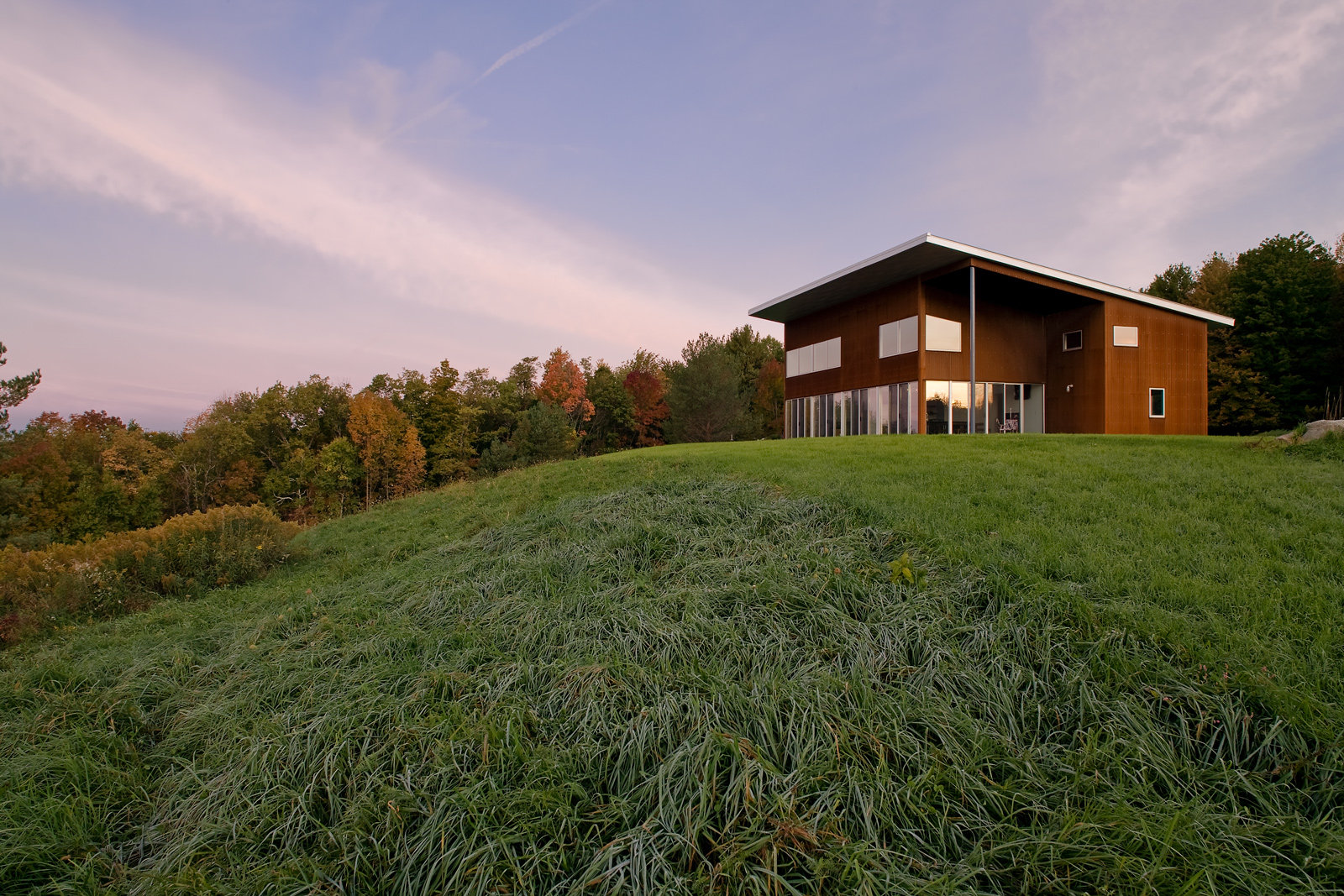
The main facade faces south, taking full advantage of solar orientation and the spectacular views. The ground floor is set into the hilltop in such a way that it appears to be a natural extension of the landscape.
photo by Michael Moran
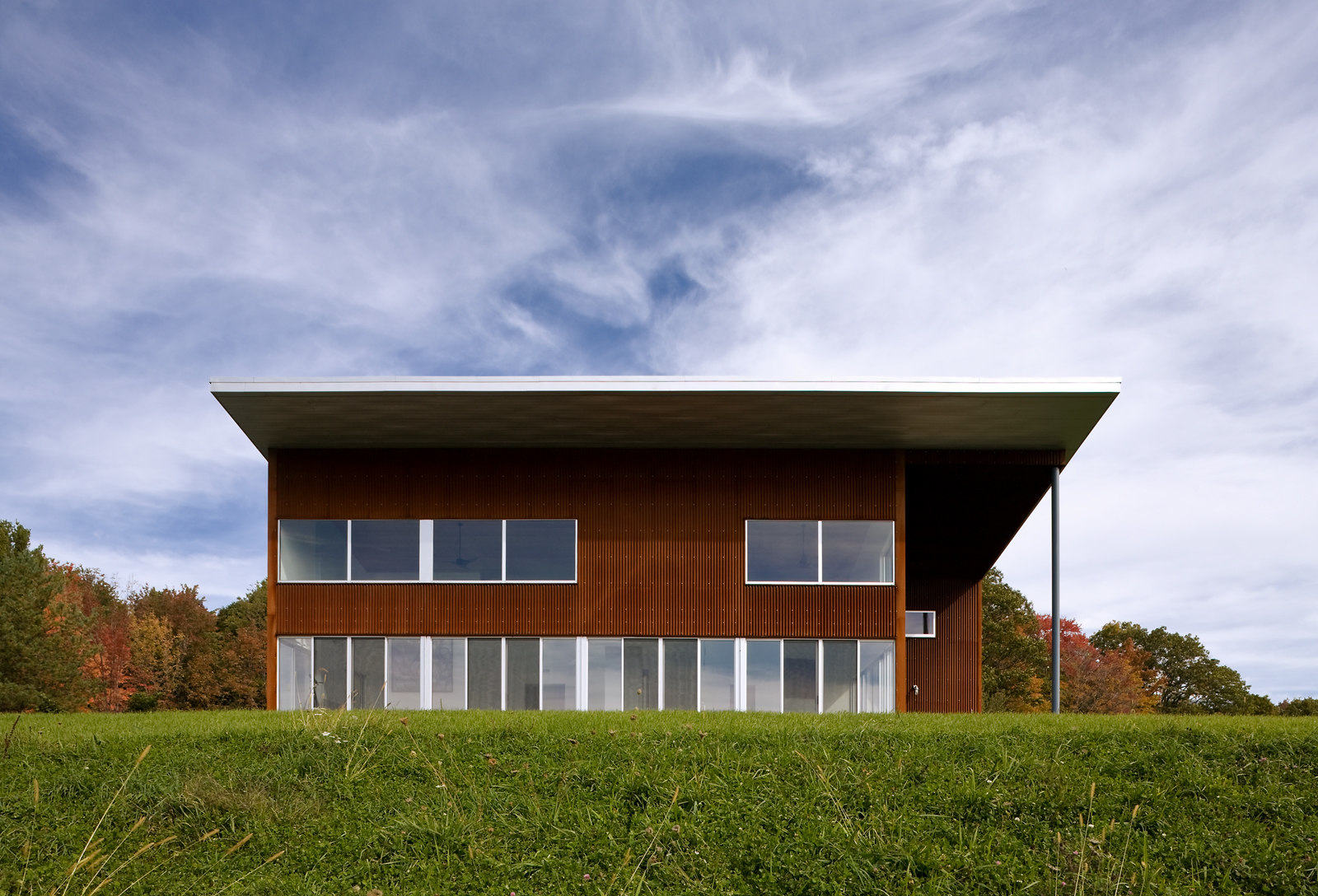
The volume of the house is clad in corrugated weathering steel, with a galvalume roof. In the front, a continuous strip of large sliding doors wraps around the main two-story space, erasing the visual boundary between indoors and outdoors and allowing the space to be completely open in warm weather. In the upper part of the facade, punched openings frame views of the ever-changing sky.
photo by Michael Moran

The plan is layered in two parallel zones. The rear bar is two stories high, with bedrooms, bathrooms and storage areas on the ground level; the upper level contains additional bedrooms and a loft overlooking the living space. The front bar is a double-height open space subdivided into living and dining areas by a low volume that provides scale and contains the kitchen.
photo by Michael Moran

The plan is layered in two parallel zones. The rear bar is two stories high, with bedrooms, bathrooms and storage areas on the ground level; the upper level contains additional bedrooms and a loft overlooking the living space. The front bar is a double-height open space subdivided into living and dining areas by a low volume that provides scale and contains the kitchen.
photo by Michael Moran
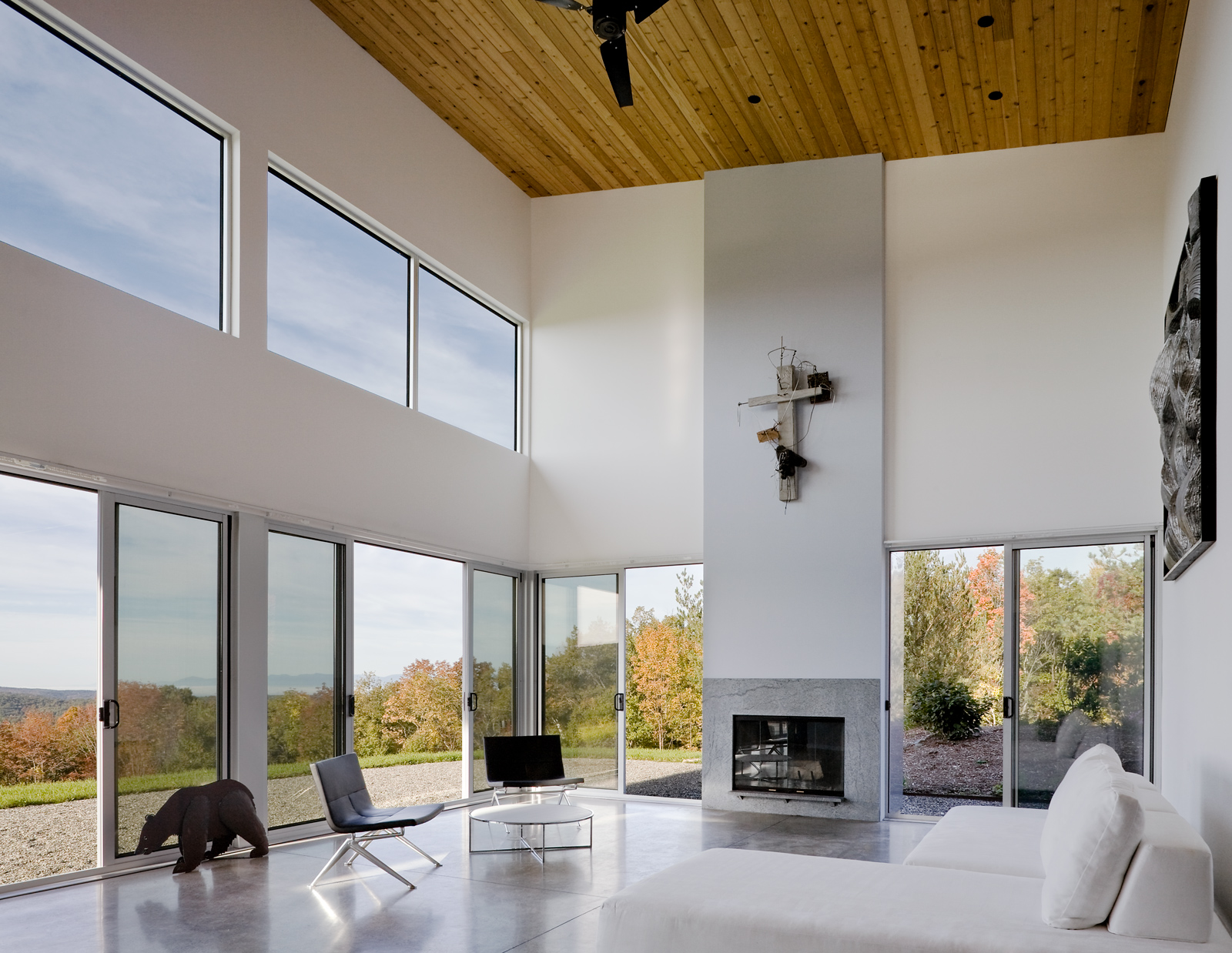
The building mass is eroded by an indentation in the corner off the kitchen; it creates a covered outdoor dining area and allows the building to interlock with the ridge of the hill.
photo by Michael Moran
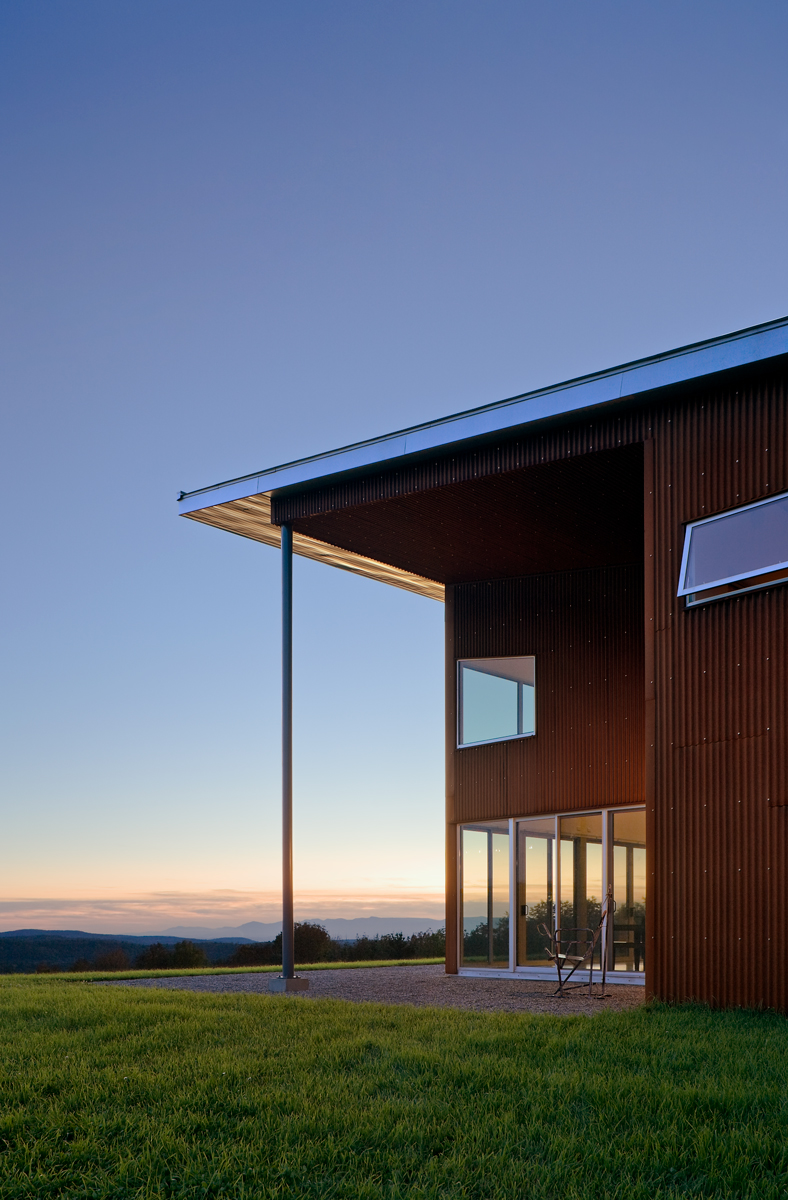
ENERGY AND SUSTAINABILITY
PASSIVE SOLAR ENERGY The house is oriented toward the south and has an overhang designed to keep the sun out in the summer and admit it in the winter. High-mass floors and walls in the large south-facing main space act as a heat sink retaining energy after sundown.
GEOTHERMAL HEATING A geothermal heat pump uses well water to generate the heat for the radiant floor system, the major part of the heating load for the building.
VENTILATION AND COOLING The abundant natural breezes flowing up the hill are routed through the house to cool it in hot weather, thus no air conditioning is needed. An energy recovery ventilator provides fresh air to the interior in the winter months, without significant loss of heat or humidity.
WATER MANAGEMENT A cistern collects runoff water from the large roof surface, to be used for irrigation.
SITE IMPACT AND LANDSCAPING The house, located in a field that had been cleared long ago, is sited in such a way as to minimize its impact on the landscape. Man-made landscaping is kept to a minimum, allowing natural flora to cover most of the site.
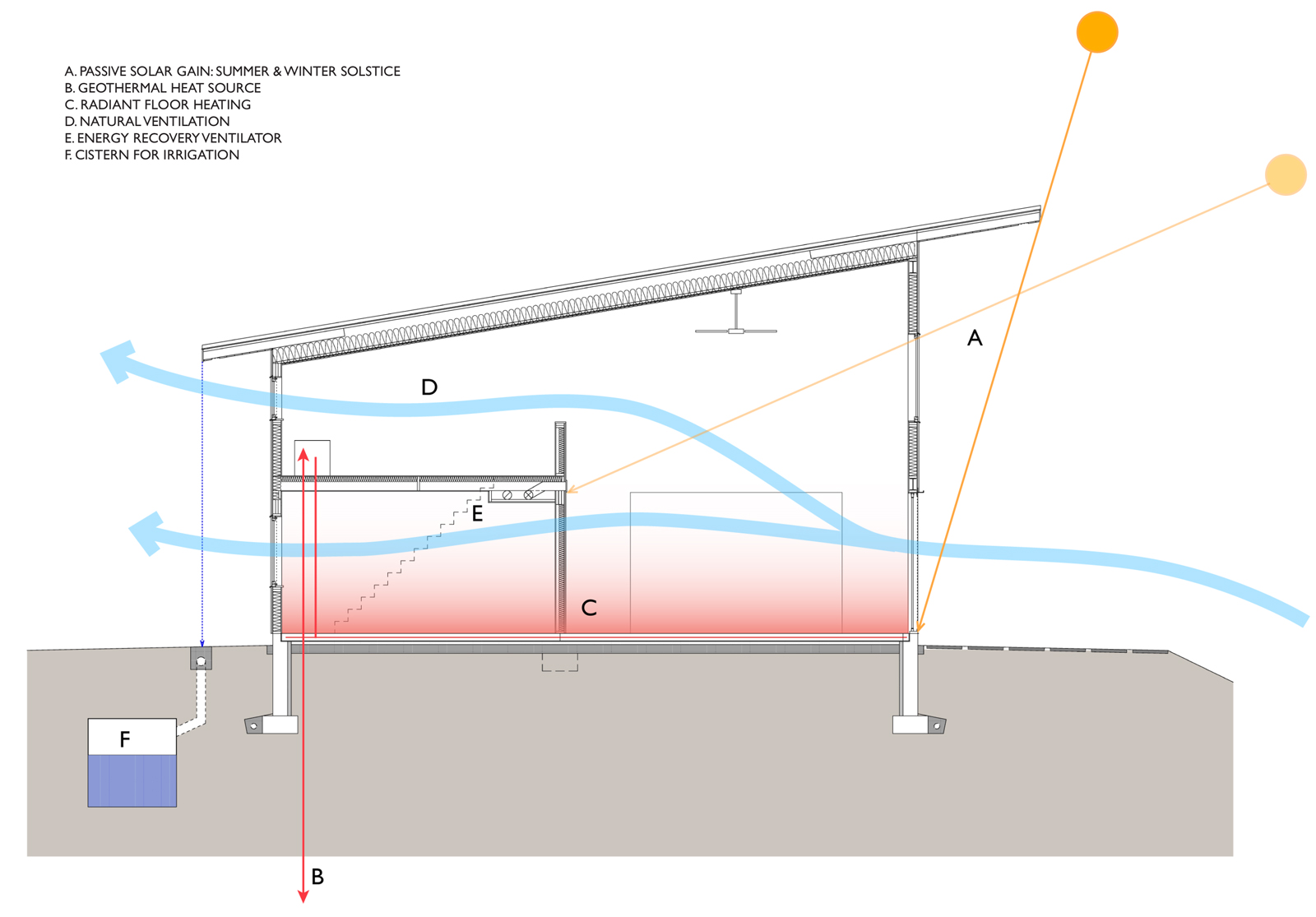
House on the Hill
Columbia County, New York